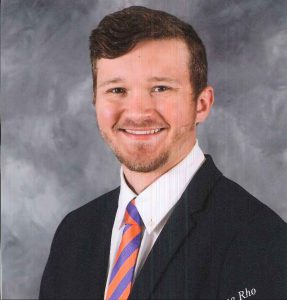
My background
My name is Sean M. and I was born and raised in coastal SE Florida. I am currently a senior at the University of Florida studying Forest Resources and Conservation with a specialization in Protected Areas Management. I was informed in November of 2021 that I have received a slot for the University of Florida Institute of Food and Agricultural Science Extension Internship for the 2022 Summer. I have chosen to intern in St. Lucie County as it is close to home, and I have previous knowledge and experiences within the landscape. My summer internship will be under the mentorship of UF/IFAS Extension St. Lucie County extension agents Ken Gioeli (Natural Resources & Environment) and Kate Rotindo (Urban Horticulture). This is my internship shadowing experience learning about current earleaf acacia biological control research.
Why am I here?
On Thursday, May 12th, I was given the opportunity to shadow Dr. Carey Minteer and her team at the UF/IFAS Indian River Research and Education Center’s Hayslip Biological Control Research and Containment Laboratory in Ft. Pierce, Florida. In the morning, her team took me out to where they planted earleaf acacia trees, Acacia auriculiformis, to conduct biological control research. The UF/IFAS Assessment of Nonnative Plants lists earleaf acacia as “Invasive” in South Florida.
Field Work
Our morning’s research work included removing the pods located on the trees that release the seeds to be counted. Before collecting the seed capsules, two tarps were placed on the grass to collect the seeds as they fell. Multiple methods were used to remove the seed capsules from the plant itself. This included using our hands to physically remove them, shaking the tree to get high-up pods that we could not reach, and pvc piping to knock off pods within proximity of arms reach.
Once we knocked off as many pods as we could, it was time to pick them up. To do this, each corner was picked up simultaneously to have all the seeds be in one middle area. Not only did this make collection easier but also made sure we did not pick any seed capsules that may have been on the ground from natural causes. We then placed all the seeds into large brown paper bags, which filled up very quickly. To make sure we did not bring any seeds from one tree to another, we would flip the tarp completely over allowing for clean tarps ready to use for the next tree.
My work in the Quarantine Lab
In the afternoon, I worked on a related project in the Quarantine Lab. This is where the biocontrol agent for the earleaf acacia is being tested. The insect we were working with was the Calomela intemerata and does not have a common name as of right now. While in this lab, we were tasked with taking the biocontrol agent out of its enclosure, placing them in a temporary dish, and looking for any eggs, larvae, and pupae. These would be placed in a separate container with other insects that have yet to be fully developed. The leaves that were in the container were thrown away and the containers were set apart to be cleaned. Finally, the fully developed insects were placed into a clean container with fresh leaves to consume.
The earleaf acacia is an invasive species that is native to Australia, Papa New Guinea, and Indonesia (Gilman et al., 2019). In south Florida, it was planted as an ornamental and quickly took off across the landscape. There is testing on a biocontrol agent to target this species that is being spearheaded by Dr. Carey Minteer and her team.







Thank you
Special “Thank you” to Dr. Carey Minteer and her amazing team at the UF/IFAS Indian River Research and Education Center for teaching me about biological control of earleaf acacia.
Works Cited
Gilman, Edward F., et al. “Acacia Auriculiformis: Earleaf Acacia.” University of Florida IFAS Extension, University of Florida, 22 Apr. 2019, https://edis.ifas.ufl.edu/
Additional Links
UF/IFAS Assessment of Nonnative Plants. Earleaf acacia. https://assessment.ifas.ufl.edu/assessments/acacia-auriculiformis/
UF/IFAS Indian River Research and Education Center Hayslip Biological Control Research and Containment Lab. http://bcrcl.ifas.ufl.edu
My Internship Blogs
Summer Internship Shadowing Scientists Through the UF/IFAS Extension St. Lucie County
 2
2
